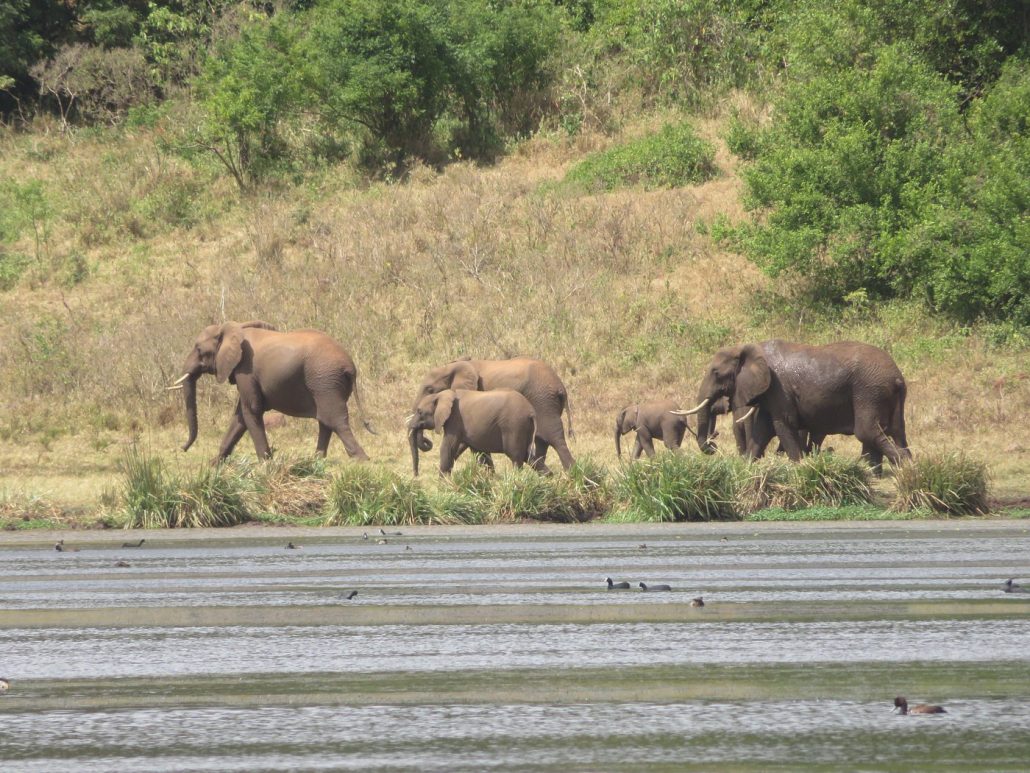Marsabit National Park
Marsabit National Park is a stunning and remote wildlife sanctuary located in northern Kenya, covering an area of approximately 1,500 square kilometers. Established in 1973, the park is known for its diverse ecosystems, which range from arid plains to lush montane forests. The park is situated around the Marsabit Mountain, an extinct volcano that rises dramatically from the surrounding semi-arid landscape. This unique geographical feature creates microclimates that support a wide variety of flora and fauna.

Marsabit National Park is a significant ecological area that provides critical habitat for numerous species. It is also a vital water catchment area, with several permanent lakes, including Lake Marsabit and Lake Jivanjee, that sustain the local wildlife and communities. The park’s relatively isolated location means that it is less frequented by tourists, allowing for an authentic and tranquil safari experience.
Scenery
The scenery of Marsabit National Park is characterized by dramatic landscapes that include the towering Marsabit Mountain, volcanic craters, and expansive grasslands. The park’s altitude ranges from 1,500 meters to over 2,700 meters, resulting in diverse habitats that transition from dry scrubland to lush montane forests. The higher elevations are often shrouded in mist, creating a mystical atmosphere.
The two main lakes within the park, Lake Marsabit and Lake Jivanjee, are picturesque and serve as crucial water sources for the wildlife. Surrounding these lakes are thick forests that are teeming with life, making them ideal spots for birdwatching and relaxation. The combination of towering peaks, serene lakes, and vibrant vegetation makes Marsabit National Park a visually stunning destination.
Wildlife in the Park
Marsabit National Park is home to a rich diversity of wildlife, making it a hidden gem for nature enthusiasts. Visitors can spot a variety of large mammals, including elephants, buffaloes, leopards, and cheetahs. The park is also known for its populations of reticulated giraffes, Grevy’s zebras, and several species of antelope such as oribi and bushbuck. The unique habitats within the park support both lowland and montane wildlife, making it an exciting destination for wildlife viewing.
The park is less commercialized than many of Kenya’s other parks, providing an opportunity for visitors to enjoy wildlife encounters without large crowds. Marsabit’s dense forests and open plains create a backdrop for varied wildlife experiences, including thrilling game drives and serene walks.
Birds In The Park
Marsabit National Park is a birdwatcher’s paradise, boasting over 300 species of birds. The park’s diverse habitats attract a variety of avian life, including both resident and migratory species. Notable birds include the African fish eagle, Jackson’s francolin, yellow-billed oxpecker, and the great blue turaco. The lush forests surrounding the lakes are particularly rich in birdlife, providing opportunities to spot colorful sunbirds and other forest-dwelling species.
Birdwatching enthusiasts can enjoy guided tours that focus on spotting both common and rare species. The tranquility of the park and the abundance of birdlife make it an ideal location for birdwatching throughout the year.
Weather and Climate
Marsabit National Park experiences a unique climate due to its altitude and topography. The weather is generally cool and temperate, with average temperatures ranging from 10°C (50°F) at night to 25°C (77°F) during the day. The park receives most of its rainfall between March and May, with a secondary rainy season occurring from October to November. This precipitation supports the lush vegetation and provides ample water sources for the wildlife.
The dry months, particularly from June to September, offer ideal conditions for wildlife viewing as animals are more likely to congregate around water sources. Overall, Marsabit’s climate creates an environment that supports a rich diversity of flora and fauna.
Getting To Marsabit national Park
Marsabit National Park is located approximately 550 kilometers (342 miles) north of Nairobi. The most common way to reach the park is by road, which can take around 10 hours depending on traffic and road conditions. The journey offers scenic views of the Kenyan countryside, with opportunities to stop at various points of interest along the way.
For those looking to save time, there are flights available from Nairobi to Marsabit Airstrip, which take about 1 hour. This option allows visitors to experience the stunning aerial views of the landscape while significantly reducing travel time.
Activities to Engage In Marsabit National Park
Marsabit National Park offers a range of activities for visitors to immerse themselves in the natural beauty of the area:
- Game Drives: Guided game drives provide opportunities to spot diverse wildlife within the park.
- Birdwatching: With over 300 bird species, birdwatching is a popular activity, especially near the lakes and forested areas.
- Hiking: The varied terrain allows for exciting hiking opportunities, providing a chance to explore the natural beauty up close.
- Cultural Visits: Engage with local communities to learn about their traditions and ways of life.
- Photography: The stunning landscapes and diverse wildlife make Marsabit an excellent destination for photography enthusiasts.
- Camping: For those seeking an adventurous experience, camping is allowed in designated areas, providing a unique opportunity to experience the sounds of the African night.
- Nature Walks: Accompanied by knowledgeable guides, nature walks offer insights into the flora and fauna of the park.
Safety and Vaccination In Marsabit National Park
Safety in Marsabit National Park is generally good for visitors, particularly when participating in organized tours. However, it is essential to observe standard safety precautions, such as staying within designated areas and not wandering off alone. Given its remote location, it’s advisable to travel with a guide who is familiar with the area.
Vaccinations are recommended for travelers visiting Kenya, including hepatitis A, typhoid, and yellow fever. While malaria risk is lower in higher altitude areas like Marsabit, it is wise to consult with a healthcare provider regarding malaria prophylaxis, especially if traveling to other parts of the country.
Park Rules
To protect the wildlife and maintain the natural beauty of Marsabit National Park, visitors are required to adhere to specific rules:
- Respect Wildlife: Keep a safe distance from all animals and do not attempt to feed or provoke them.
- Stay on Designated Trails: To minimize ecological impact and ensure safety, visitors should stick to marked paths and roads.
- No Littering: Dispose of all waste responsibly. Littering is strictly prohibited, and visitors are encouraged to leave no trace behind.
- Noise Restrictions: Maintain low noise levels to avoid disturbing wildlife and other visitors.
- Fire Safety: Fires are only permitted in designated areas. Follow all fire regulations to prevent wildfires.
- Cultural Respect: Be respectful of local communities and their customs. Engaging with local cultures should be done sensitively.
By adhering to these rules, visitors can contribute to the conservation of Marsabit National Park while enjoying their safari experience.
